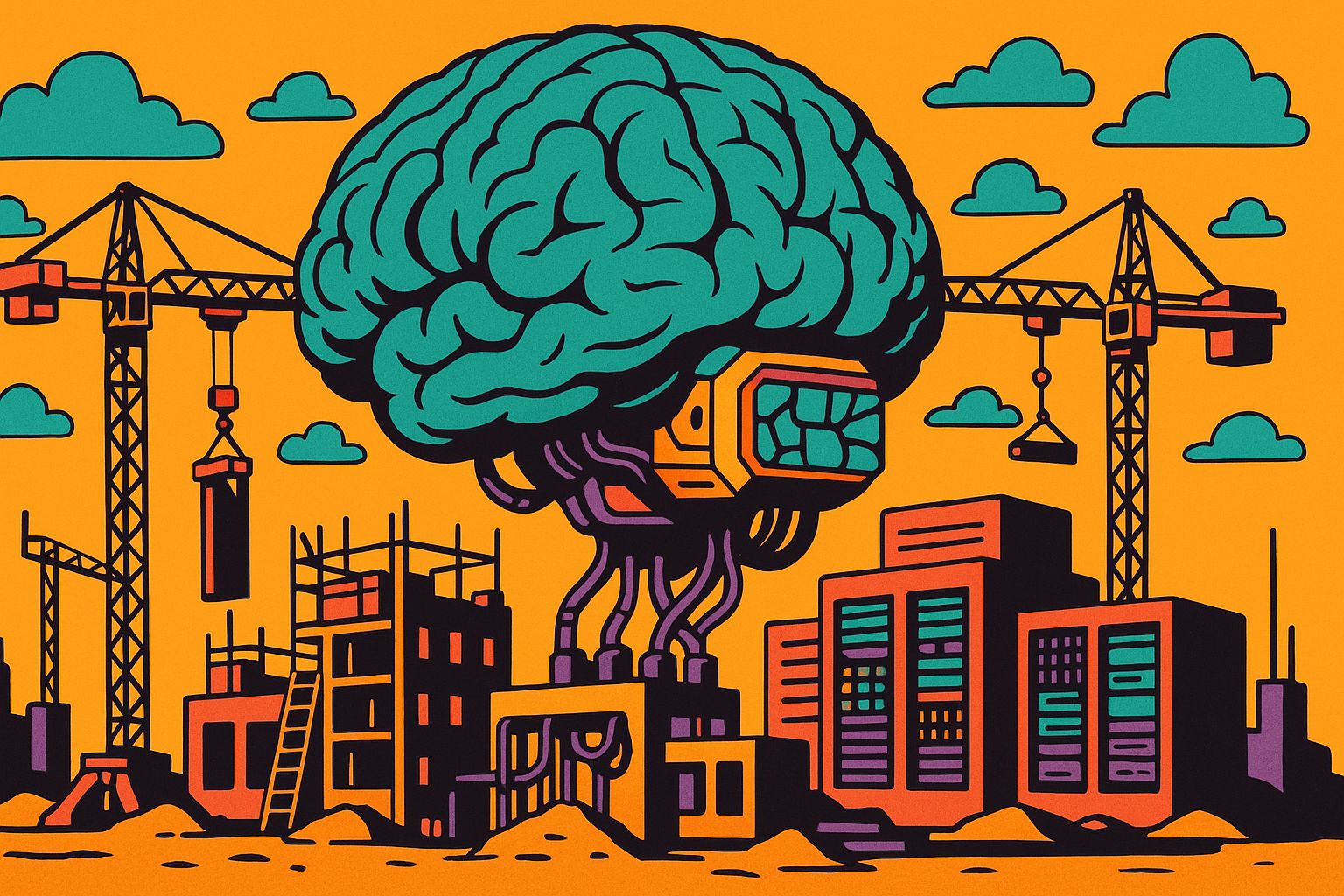- AI Hustle Tips
- Posts
- AI Infra Expansion Update + Cart Recovery Stack Workflow
AI Infra Expansion Update + Cart Recovery Stack Workflow
Google slashes LLM costs as OpenAI scales compute with Stargate—plus a 3-tool AI stack to track, segment, and recover abandoned carts!

This week, AI infrastructure gets a tangible jolt—models are cheaper, data centers are bigger, and the stakes for deployment just got real.
First, we’ll break down how Google’s latest release and OpenAI’s Stargate buildout are reshaping what’s possible (and affordable) with LLMs.
Then, we’ll show you a focused 3-step Cart Recovery Stack Workflow to spot drop-off, decode shopper hesitation, and win back lost sales with precision.
Read on to see how AI is powering both massive scale and smart, personal recovery.

AI Infrastructure Gets a Reality Check
Google launches its cheapest high-context model yet; OpenAI signs a megawatt-scale data center deal with Oracle; new use cases emerge for real-time, low-cost LLMs; infrastructure expansion passes 5GW and counting.
WHAT’S NEW:
Gemini 2.5 Flash-Lite Goes Stable: Google’s newest model runs faster than prior Flash versions, supports a 1M token context window, and costs just $0.10/$0.40 per million input/output tokens.
Real-World Rollouts: Satlyt uses it on satellites, HeyGen for video translation in 180+ languages, and DocsHound for auto-generating product docs from demos.
Stargate Megadeal: OpenAI partners with Oracle to build U.S.-based data centers drawing 4.5 gigawatts—enough to power a major city.
Abilene Expansion: With Texas construction underway and GB200 chips delivered, OpenAI surpasses 5GW of AI-dedicated capacity.
Jobs + Chips: Over 100,000 jobs expected from Stargate infrastructure; SoftBank and Microsoft deepen involvement across design and cloud layers.
WHY IT COUNTS:
Google’s pricing shifts the barrier to entry for developers—real-time AI is now budget-friendly.
Flash-Lite’s massive context unlocks new use cases like long-form translation and code comprehension.
OpenAI’s buildout shows AI isn’t “in the cloud”—it’s rooted in power, land, and labor.
Infrastructure scale determines who leads in the next phase of model deployment and access.
What This Means for Us Entrepreneurs
We’re entering a phase where cost is no longer the biggest blocker to building with AI.
You don’t need to raise money or join a startup accelerator to build something powerful. With models like Flash-Lite, you can launch tools that process tons of data, generate content, or power customer experiences—without sweating over every API bill.
At the same time, OpenAI’s data center expansion signals that compute access will become more centralized. That means the edge goes to those who learn how to use these models creatively—not those trying to train their own.
Focus less on technical wizardry and more on workflows: how you gather input, prompt smartly, and deliver value. Think video dubbing tools, instant documentation, multi-language support, and long-form summarization.
The playing field isn’t just level—it’s wide open for those who can execute lean, fast, and smart. Build now, before the next wave crowds in.
Find out why 1M+ professionals read Superhuman AI daily.
In 2 years you will be working for AI
Or an AI will be working for you
Here's how you can future-proof yourself:
Join the Superhuman AI newsletter – read by 1M+ people at top companies
Master AI tools, tutorials, and news in just 3 minutes a day
Become 10X more productive using AI
Join 1,000,000+ pros at companies like Google, Meta, and Amazon that are using AI to get ahead.
🧠 This Week’s Practical Use Case
Abandoned carts don’t always mean lost sales—but chasing every shopper manually is impossible, and guessing why they left rarely gets it right.
You try recovering them with broad discounts or timed emails, but without clear reasons or personalized messages, most bounce for good.
This 3-tool stack flips that script. It gives you a clear signal on who’s abandoning, why they’re leaving, and how to bring them back with tailored outreach—no spam, no guesswork.
If you sell online, this trio helps you recover more revenue with less effort by turning abandoned carts into informed, personalized follow-ups.
Step 1: Spot the Exit
Tool: Wandz.ai
Wandz.ai monitors each user session and predicts when someone is likely to abandon based on in-session behavior.
✅ Uses real-time machine learning to assess scrolls, pauses, and movement
✅ Triggers dynamic offers or messaging before the user exits
✅ Adapts to shopper type and product category
👉 Why you need this: It lets you act at the moment of hesitation—without hitting every visitor with the same popup.
Step 2: Segment Abandonment Causes
Tool: Moosend
Moosend analyzes cart and browsing behavior to group users by likely reasons for leaving.
✅ Identifies patterns like price sensitivity, UX friction, or timing gaps
✅ Supports conditional automations based on user actions
✅ Works across major ecommerce platforms
👉 Why you need this: You’ll stop treating every abandoned cart the same—and start tailoring your recovery approach.
Step 3: Deliver Personalized Win-Back Messages
Tool: Ryzeo
Ryzeo sends behavior-based recovery emails and SMS with messaging that adapts to each user’s cart and past actions.
✅ Tracks product-level interest for message targeting
✅ Adjusts timing and tone based on browsing data
✅ Reports ROI and conversion impact from each campaign
👉 Why you need this: It brings people back with relevant follow-ups—not one-size-fits-all discounts.
Sidenote: here are a few more newsletters you’ll want to follow in the space.
Why This Works
Shopper hesitation isn’t always vocal—but behavioral data tells the story if you know how to read it.
✨ By decoding quiet signals like scroll pauses and tab switches, you catch indecision before it turns into bounce.
Segmentation keeps your outreach from falling flat.
✨ When you know why someone bailed, your message can speak directly to their doubt—without over-discounting or over-explaining.
Recovery is a timing game—guesswork loses the sale.
✨ Smart automation reacts in sync with shopper intent, nudging them back while the product is still top of mind.
Ever tested a full AI loop for recovering abandoned carts in real time? 🛒⚡
Drop your favorite tools or clever twists for spotting drop-off, segmenting the “why,” and bringing shoppers back with smart follow-ups—we're all ears!
See you next week with another practical AI sales stack you can put to work fast.


